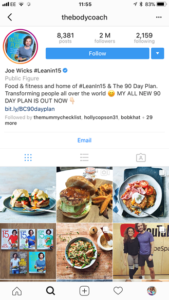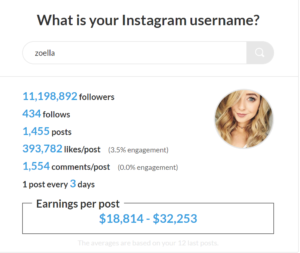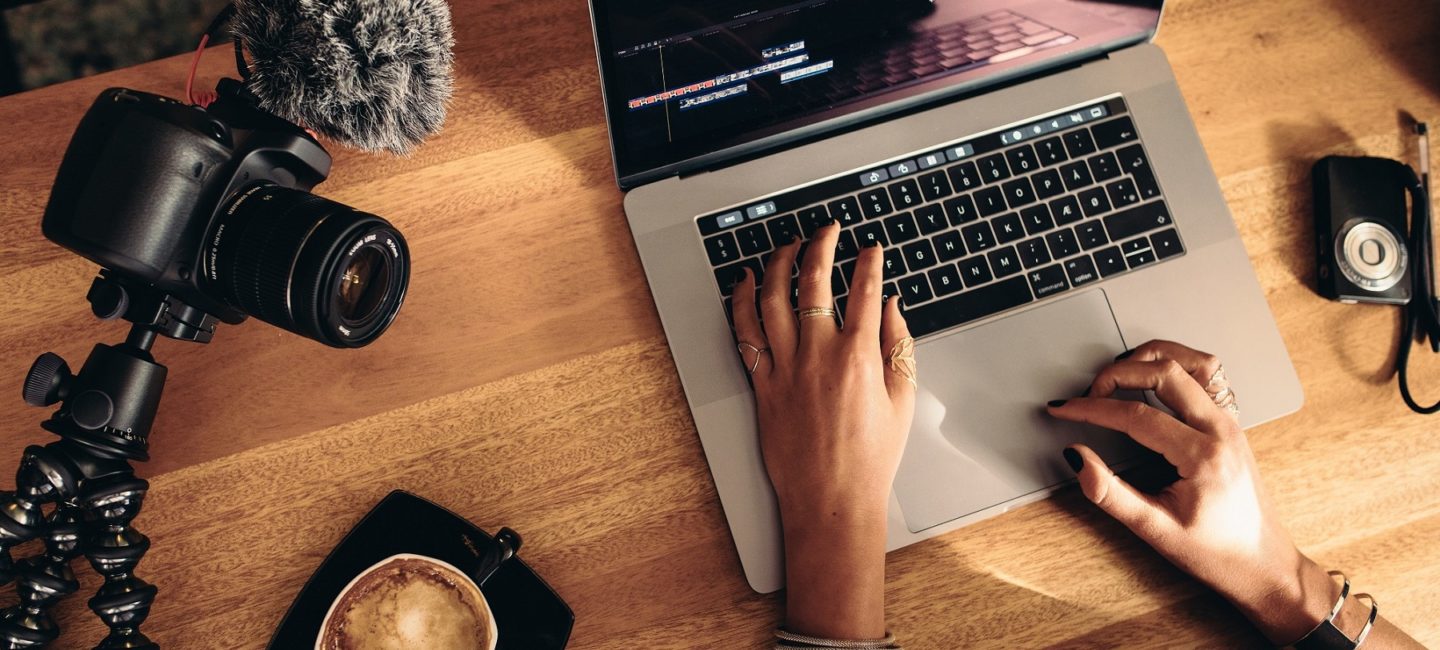12 Ways to Win at Influencer Marketing
About this time last year, eMarketer reported that 84% of marketers were planning to run some sort of influencer campaign over the next 12 months.
They weren’t far wrong. In the space of just 18 months, we, as an agency, have gone from receiving no consumer PR and social briefs mentioning influencer marketing whatsoever, to 100% listing it as a vital part of a campaign’s output.
We were one of the first agencies in the UK to deliver a campaign that centered around the use of micro-influencers at scale. This was for All Bar One, with the project going on to deliver a 28% increase in brunch sales. It captured the attention of the marketing and trade press too, in the main for its innovative approach to PR.
So, how can you make influencer marketing work for you? We think there are 12 ways to win at influencer marketing – and they look like this:
1. Decide What You Mean by ‘Influencer’
In our view (and our view differs slightly from the norm), there are three types of influencer:
- Influencer turned celebrity – in British terms think Zoella, Joe Wicks and Tanya Burr. These people were born on social, but are now reality TV stars, celebrity chefs and published authors in their own right. Their followings are so huge (Joe has 2million on Instagram alone), that they command enormous fees for any sort of product association (Zoella is widely reported to want in excess of £60,000 for a single Instagram post), and that is only if they see yours as a brand they are happy to work with. Joe Wicks is reported as saying that he only promotes one product now, and turns down countless lucrative deals in order to preserve his Body Coach brand – one that turns over more than £1million a month.

- Macro-influencer – one step down from celebrity influencers, macro-influencers are big, but probably not quite at autograph stage yet (although some, like Sam Chapman, are). With anything from 100,000 to 1,000,000 followers across their social channels, they can deliver big reach, but with a less daunting price tag.
- Micro-influencer – with anything from 1,000 – 100,000 followers on Instagram, micro-influencers can be a marketer’s dream, largely because you can work with 10 and get the reach of one macro-influencer, but at a fraction of the cost. You’ll almost certainly see higher engagement rates too – micro-influencers tend to have extremely engaged followers, who are genuinely interested in their content.
[Read micro-influencer case studies here: Arden Fine Foods and Cypriot Potatoes]
2. Decide Your Influencer Marketing Objective
- If your objective is huge reach, and you have a huge budget to match, a celebrity influencer is probably your best bet.
- If it’s reach and resonance, but with a slightly more niche audience, try to find an up-and-coming macro-influencer for a brand ambassador type partnership. Look hard enough and you will probably find someone to fit your budget, but only if it is £10,000 or more, realistically. Remember, the bigger the following, the higher the cost.
- If your objective is authentic-looking brand recommendations to drive consideration and conversion, and budget is limited, give serious thought to a micro-influencer engagement programme. We’ve seen exceptional results for a wide range of clients from food and drink, to retail and leisure, with costs starting from as little as £2,600 for up to 20 influencers.
3. Spend Time Finding the Right Influencer
There are many ways to look for influencers, starting with Google if it’s macro-influencers you’re after. A search for top food, parenting, health, fashion influencers etc., will turn up thousands of names across hundreds of lists.
We’d also recommend looking at LinkedIn, which is built specifically to help you network with others operating in, and around, your industry. Enter the type of influencer you’re looking for in the search bar, and you’ll get thousands of names to look into; pay for LinkedIn Sales Navigator and you can run a far more sophisticated search. You’ll need to check their reach on other channels but, as a search engine, it’s a good place to start. We especially like LinkedIn as a quick way to identify influencers by their location.

On Instagram, searching by hashtag is the best way forward. Search by both keywords, and the abbreviations influencers use e.g. #Bblogger for beauty blogger.
Twitter’s advanced search options provide the opportunity to reach specific audiences, or to find those who are addressing niche crowds. Facebook community groups are worth investigating too.
There are also several platforms out there that will help you to connect with micro-influencers at scale. We like Hype, Tribe and Takumi.
Finally, agencies like ours have, over many years, developed comprehensive databases of influencers in every sector, and we engage with them on a regular basis. Employing an agency which specialises in influencer marketing will help you to quickly, and effectively, connect your brand with the people who matter.
4. Don’t Get Hung Up on Reach
Reach is important, but so is resonance. Looking at the engagement rate (follower numbers divided by post likes) will tell you how interested an influencer’s audience is in their posts, and therefore how likely they are to be swayed by their recommendations.
A word of caution here though. The blogger community supports each other, with a lot of “you like my post, I’ll like yours” sentiment. Check that the engagements are coming from genuine followers, and not just from other newer influencers trying to establish a decent enough following to make a living from social networking.
5. Be Realistic With Your Budget
Influencers haven’t built their audiences by accident. They’ve spent years developing their brand and growing their follower base and, for many, it’s a full-time occupation. You will have to pay for a brand endorsement or partnership, and the cost will vary wildly from one influencer to another.
If you want to get a really quick feel for how much you can expect to pay for an influencer, try an Instagram money calculator. They aren’t perfect but will give you a very rough indication of how much you could expect to pay for one Instagram post.

6. Do Your Due Diligence
Before you contact any influencer, make sure you check back over a good number of posts to ensure the person you have in mind shares your brand’s vision and values, and promotes brands you’re happy to be associated with.
7. Take a Long-Term View
When you have established the influencers you really want to work with, take time to engage with them – liking, sharing and commenting on their posts (from your personal account, not a brand page).
8. Remember, First Impressions Count
Don’t just bowl in with a financial offer of a brand partnership. Understand the sort of content the influencer creates, explain why you love their work and why a brand partnership would work for them, as well as you. Good influencers will get a lot of offers, and will cherry pick.
9. Don’t Be Offended
If an influencer turns you down, don’t take it personally. They know their audience and if they feel your brand isn’t the best fit, they are right. Spend your budget where it would be more effective.
10. Give Your Influencer Creative Freedom
Yes, you are paying the influencer but no, you can’t dictate how a post should look and feel. The influencer will know the sort of picture or video that resonates with their audience, and you have to trust them on this. You need the partnership to be organic, credible, believable – and your influencer knows how to make that happen. Be too dictatorial and you also risk the influencer walking away from the deal.

11. Know the Rules
There has been a lot of publicity around paid brand endorsements on social, and the guidelines are pretty clear: you have to be open and upfront about it. Many celebrities now lead posts with ‘paid partnership’ – at the very least posts must contain the word ‘#ad’, ideally not hidden in a long list of hashtags (but this part is still a slightly grey area). Instagram now has a ‘paid partnership’ feature, but this is currently only available to accounts with high levels of engagement, and with access to Instagram insight data (in short, verified accounts).
12. Be Creative
Finally, be realistic about your product’s suitability for an influencer marketing campaign. There are lots of products out there that lend themselves perfectly to a stunning Instagram shot, but (somewhat obviously) a decent Instagrammer won’t take a picture of their bank statement, insurance policy, toilet roll holder or utility bill. That’s not to say that they won’t support you, but you will have to give them a creative campaign to talk about, or other such news hook. Our Chief Adventure Officer campaign for the Rail Delivery Group is a classic example of this.
So there you have it – 12 ways to win at influencer marketing. Go forth and good luck – but do get in touch if you have any further questions.
The author: Jane Ainsworth is managing director of WPR. She has over 20 years’ experience in developing and delivering communications strategies for consumer brands including Dunelm, Tesco, Mothercare, Greene King, John Lewis, Bullring, Beaverbrooks and Westfield
